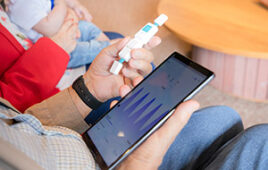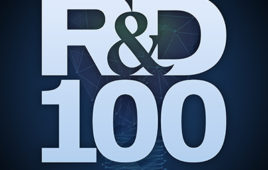
Quanterix Corporation, a company digitizing biomarker analysis with the goal of advancing the science of precision health, and DestiNA Genomics Ltd, a manufacturer of patented reagents for nucleic acid detection, today announced that PLOS ONE has published a proof-of-concept single probe method for detecting microRNA biomarkers associated with liver toxicity.
Published jointly by Quanterix, DestiNA Genomics Ltd., Edinburgh University and the Pfizer-Universidad de Granada-Junta de Andalucía Centre for Genomics and Oncological Research (GENyO), the study, titled, “Polymerase-free measurement of microRNA-122 with single base specificity using single molecule arrays: Detection of drug-induced liver injury,” details a clinically meaningful method for detecting drug-induced liver injury using the Single Molecule Array Detection technology, or Simoa™, developed by Quanterix, in association with the ‘SMART Nucleobase’ and probe chemistry by DestiNA.
“Drug-induced liver damage is a major health issue for patients and presents unique testing and treatment challenges for doctors and drug developers,” said Dr. James Dear, Reader in Clinical Pharmacology at the University of Edinburgh and co-author of the paper. “To optimally manage liver damage as a result of medicines, we need to identify biomarkers that can quickly and easily measure drug-induced liver injury. This new method provides an accurate measurement of miR-122 with user-independent sensitivity with a time-to-result that is needed to develop tests that can improve patient safety.”
miRNA-122 (miR-122) is an emerging biomarker shown to provide more sensitive, specific detection of drug-inducted liver toxicity. While it has been proven to be more effective than an alanine transaminase (ALT) enzyme test in analyzing liver toxicity, previous workflow challenges associated with standard PCR-based assays along with the lack of speed and reproducibility needed for routine clinical testing, have stalled the progression of miR-122 in clinical research.
“It’s an exciting breakthrough in RNA detection to learn that microRNA serve as valuable clinical research biomarkers,” said Hugh Ilyine, DestiNA’s CEO. “Using a PCR-free approach that delivers a simpler, faster preparation and analysis time, but with higher accuracy, means easy microRNA detection from serum and plasma is finally possible and opens up the development of microRNA as valuable clinical biomarkers.”
Key Findings
miR-122 was measured in the serum of patients who had overdosed on acetaminophen and sustained clinically significant liver injury. Serum samples were tested for miR-122 using the single molecule assay and quantitative PCR.
The high specificity (>3 × 10^7-fold) in the Simoa assay was achieved from the SMARTbase technology using only a single probe rather than multiple probes and primers used in PCR. The use of a single probe greatly simplified the assay designed while maintaining the ability to discriminate target sequences with single base specificity.
The data indicate that the sensitivity and specificity of the Simoa assay was sufficient to measure miR-122 in all patients, and showed a clear distinction between healthy controls and those with clinical liver toxicity after drug overdose, as was the case for PCR.
“The potential to easily and quantifiably detect nucleic acids using our Simoa assay shows new opportunity for the technology and for researchers studying the clinical implications of RNA,” said David Duffy, Vice President, Research and Chief Technology Officer at Quanterix. “This paper serves as an initial proof-of-concept and encourages our thinking about potential applications using the Simoa technology beyond liver toxicity, including liquid biopsies, early and rapid diagnosis of sepsis and pharmacokinetic measurements of RNA and DNA therapeutics.”




